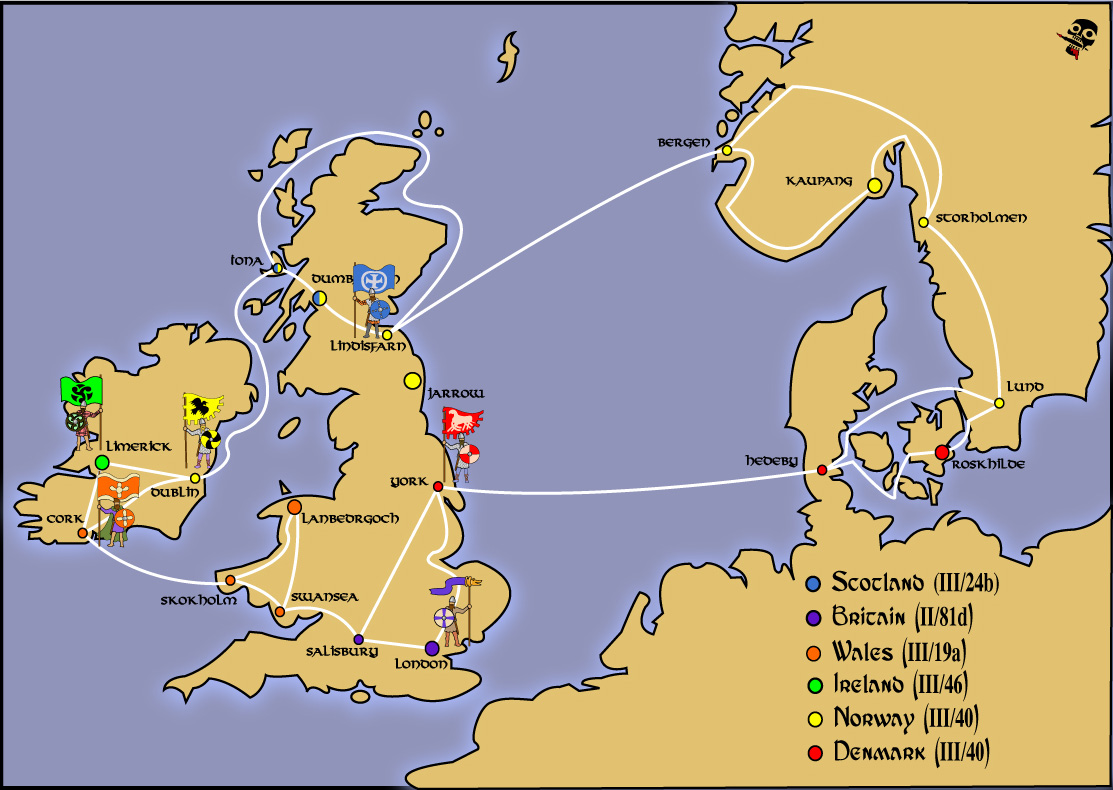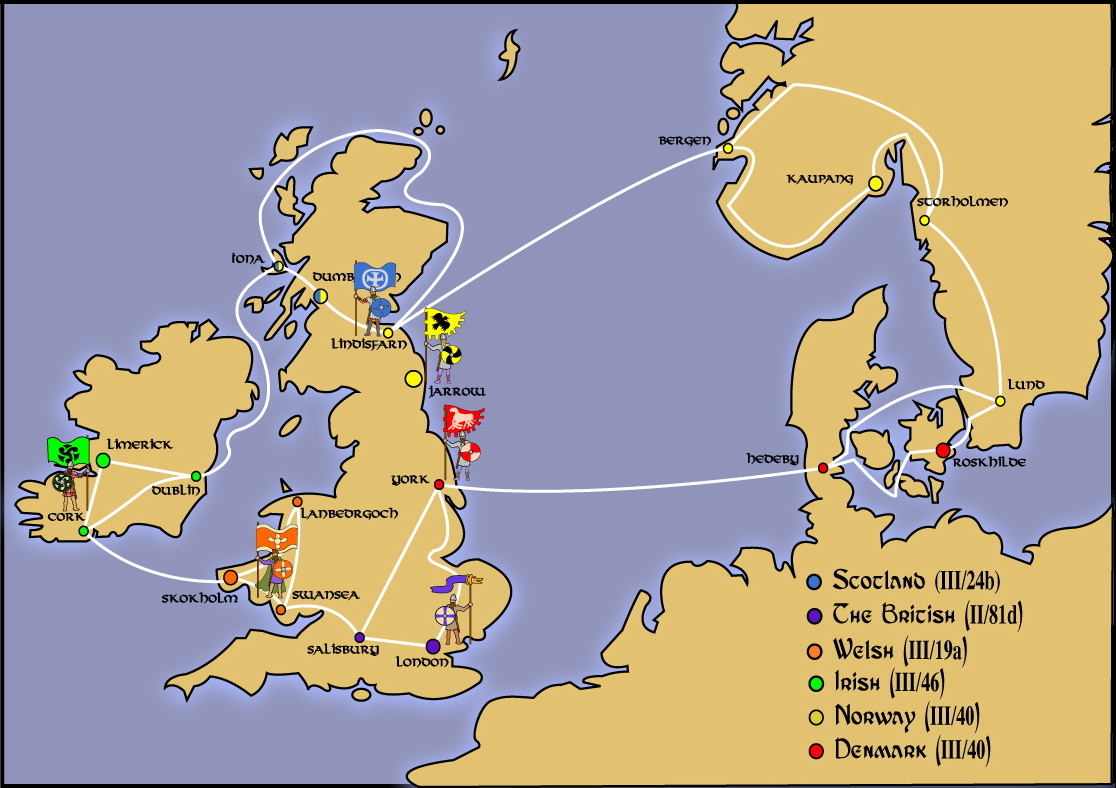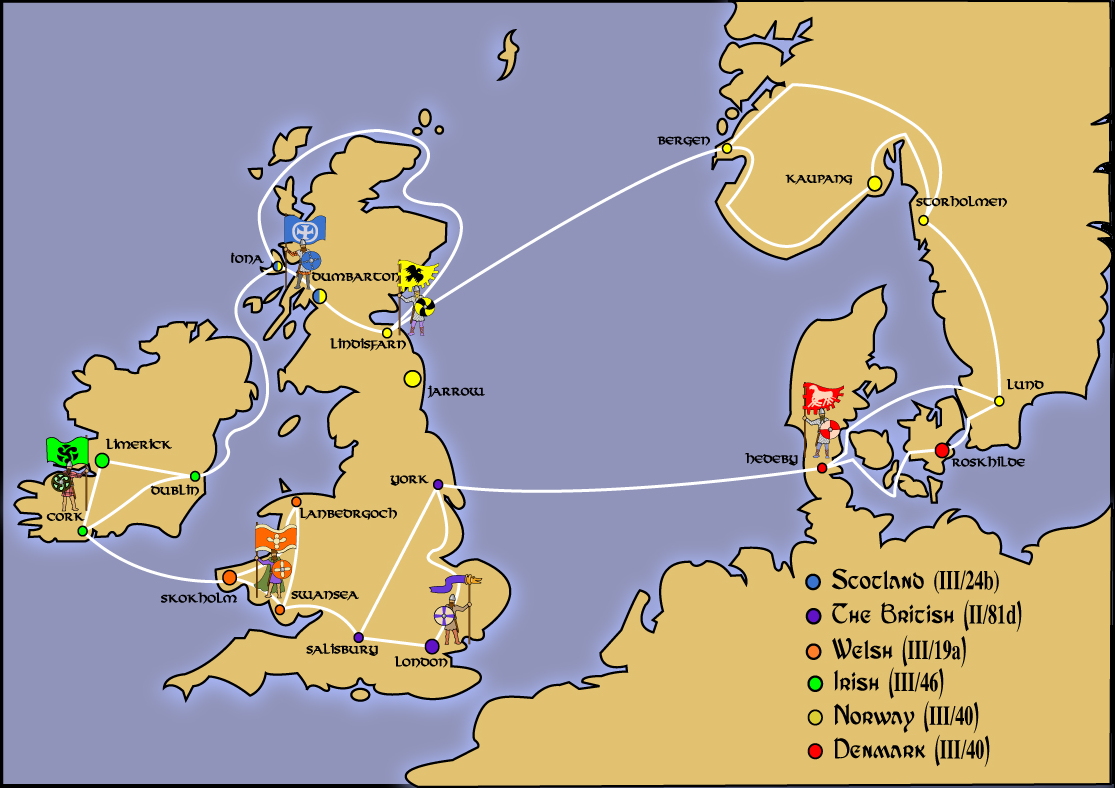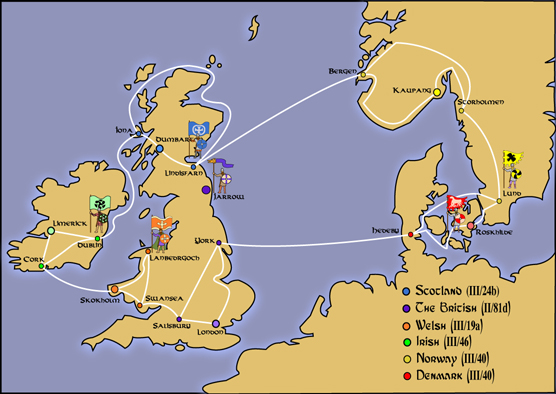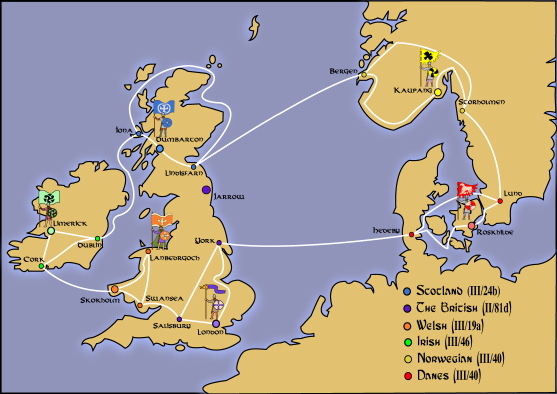As the cool wind of autumn spread through the lands, an air of tension came with it. As the farmers harvested their year's worth of grain and vegetables, armies marched, stealing that ever-important labour needed to bring in the harvest before the first frost. But not only that, but every farmer and herdman prayed to the gods that the marching armies did not march on their lands...
Along with the tensions of the people and the harvest, many warlords had unfinished business with their neighbors, and every one of them hoped to resolve their business before the first frosts of winter forced them to return to friendly grounds and overwinter. With that, Skuld took no time in mustering his hird and his ships and sailing for Dublin; he had sent a messenger to the Irish king Padraigh Olafson in the spring of 847 and was unable to come to a peaceful agreement on border disputes; Padraigh Olafson refuse to pay tribute to Skuld and join Norlaw. And so, it was time to take what would not be freely given.

Skuld Darkhair and his Norwegian Vikings take Dublin.
As Skuld's longships were pushed up onto the shore, and Irish monestaries were sacked, Padraigh Olafson sent his brother Neildraigh to make battle in defense of the city. Neildraigh was smart enough to harass Skuld's hird from the hills, and Skuld would not hold his men back, and so battle was joined.
The fighting was tough, and many a heroic deed was done during the battle, but in the end the hills were not enough to save the Irish from the bloody axes of the Norwegian vikings. Neildraigh called for a general retreat once his forces were taken low, and Dublin opened its doors to the Norwegians, and would now be the new capitol of Norlaw, the Norwegian kingdom in the Isles.
Skuld Darkhair was not the only warlord looking to finish (or start?) their business in the autumn of 847. Sean ap Cadwalladr ap Maelcon of Wales launched his ships, laden with his warriors and made land on the shores of Ireland just outside of Cork. Neildraigh Olafson's army had retreated from Dublin into Cork, and so the armies met in battle there, and again the Irish were put to defending their lands under Padraigh's brother Neildraigh in the second battle of Cork.

Sean ap Cadwalladr ap Maelcon takes Cork for Wales.
Neildraigh Olafson's warriors put up a most spirited fight. The battle raged through the hills around Cork. But so it was that the two chiefs saw each other and set to battle! As Neildraigh charged screaming down the hill, Sean ap Cadwalladr ap Maelcon of Wales kicked his horses and called the charge, taking the two warlords and their bodyguards into battle. The fight between the warlords raged for near on half an hour before Sean ap Cadwalladr ap Maelcon put Neildraigh to flight. With the Irish army on the run back to Limerick, Cork fell to the Welsh.
And so it was that Ireland as a unified kingdom was no more; the Irish under Olafson held strong throughout the war and managed to repel a British invasion. But so it was that at the end of 847, the Irish cities of Dublin and Cork would fall to invaders.

Skuld Darkhair and his Norwegian Vikings take Dublin.
But Ireland would not be the only land to see bloodshed in the autumn of 847. Just as the Danish people of York were settling in to their new holdings, the British marched on them. Homesteads were burned, villaged razed, and fields salted as the vengeful King Pendragon came to reclaim York for the British!
The Danes, seeing the wrath of the British said nay to sallying out and made ready for a siege. Walls were repaired, archers were set, and the British hit the walls of York with fury. Many a defender and attacker were thrown from the walls, many a fire was started and quenched, and many a breach was made and repaired during the fighting, but York did not fall; the Danes would hold their Danelaw through the winter of 847!
And so ends two years war that started in 846 and lead a bloody path through to the end of 847. Many a warrior was killed, many a city was conquered, and many and army war made victorious! Of the 19 cities, 6 changed hands during the campaign, which is almost a third. All of the cities that changed hands did so only once, and so none were re-taken by their original owners. I think that says a lot about the DBA campaign system itself: it takes a lot of time to rebuild an army. In this campaign, there simply wasn't enough time/turns to see much turn around in that sense. I like that aspect of the DBA campaign, as it has a real sense of realism for me there. Also, I like that the dominating player is by no means more able to hold their expanding empire more easily than anyone else; every army can only have at most 12 elements, so given time, the larger the empire the harder it would be to hold.
The other thing that this campaign did was bring the whole Viking age to the fore front in our local gaming group. Not only did it create a number of situations where Viking age armies needed to do battle, but it also created a large number of grudges that will no doubt carry on the spirit of the campaign forever! I mean, the Danes will certainly be interested in putting the Norwegians to flight in the future. As well, I am sure the British would like to see the backs of the Vikings as well. On top of that, the Welsh and the Norwegians, whose alliance kept them from coming to blows, will certainly have a show down (again and again no doubt) to see who of the two should rule the islands! Overall it was great fun and I look forward to the next one! Thanks to everyone who took part for making the effory; I couldn't have asked for a better group of people to help bring this first attempt at a DBA campaign to a successful conclusion! This is the first campaign that I actually played through to the end without having people drop out!
So, check out below for the final tally in the campaign. The prestige calculated below is for not only battles, but also for the tally of the cities held and the tributary cities that all of the kingdoms held at the end of the campaign. The prestige for each kingdom before the cities were added in is: Norway: 10.4 prestige, Wales: 9.0, Britain: 7.9, Scotland: 4.5, Ireland: 2.2, and Denmark: 0.

